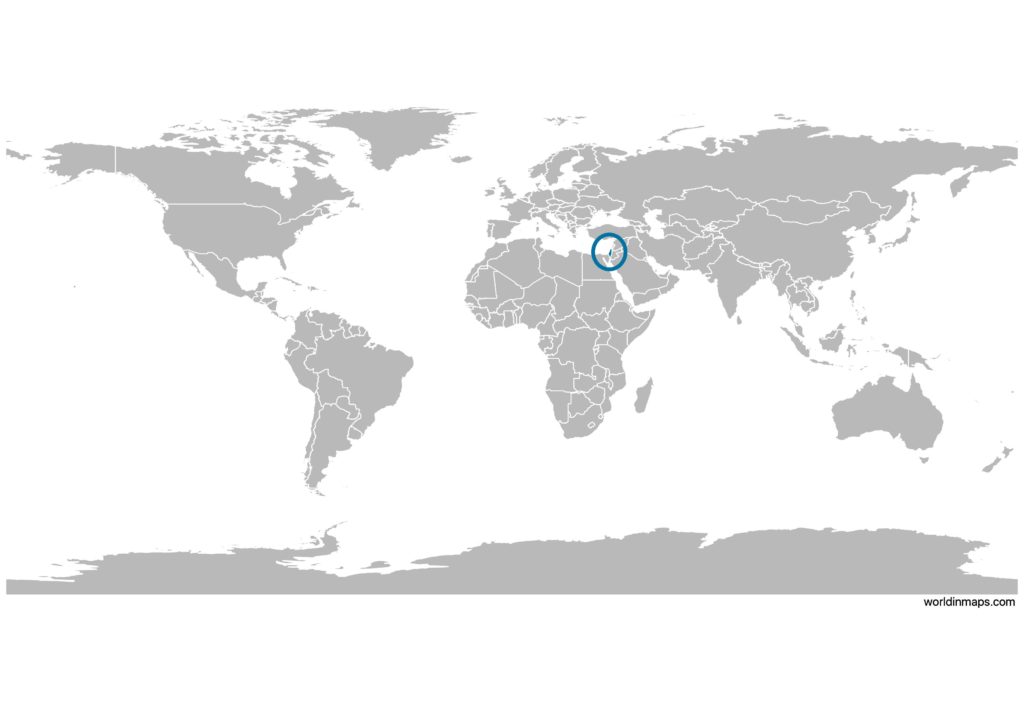Israel

| Government | |
| Name | Israel |
| Hebrew | יִשְׂרָאֵל |
| Arabic | إسرائيل |
| Government type | Parliamentary democracy |
| Capital | Jerusalem (919,438 (2018)) |
| Currency | Israeli new shekel (ILS) |
| People | |
| Population (2020) | 8,655,541 (99th) |
| Density of population | 417 P/km2 (35th) |
| Nationality | Israeli |
| Official languages | |
| Hebrew (official) | |
| Arabic (special status under Israeli law) | |
| Ethnic groups (2018) | |
| Jewish | 74.4% |
| of which: | |
| Israel-born | 76.9% |
| Europe/America/Oceania-born | 15.9% |
| Africa-born | 4.6% |
| Asia-born | 2.6% |
| Arab | 20.9% |
| Other | 4.7% |
| Religions (2018) | |
| Jewish | 74.3% |
| Muslim | 17.8% |
| Christian | 1.9% |
| Druze | 1.6% |
| Other | 4.4% |
| Life expectancy (2020) | |
| Male | 81.1 years |
| Female | 85 years |
| Total population | 83 years (10th) |
| Homicides | |
| Total (2017) | 1.5 per 100,000 people (119th) |
| Geography | |
| Land area | 21,497 km2 |
| water area | 440 km2 |
| total area | 21,937 km2 (153th) |
| Mean elevation (does not include elevation data from the Golan Heights) | 508 m |
| Lowest point | |
| Dead Sea | 431 m |
| Highest point | |
| Unnamed dome (west of Mitspe Shlagim) | 2,236 m |
| Land use (2011) | |
| Agricultural land | 23.8% |
| Arable land | 13.7% |
| Permanent crops | 3.8% |
| Permanent pasture | 6.3% |
| Forest | 7.1% |
| Other | 69.1% |
| Urbanization | |
| Urban population (2020) | 92.6% |
| Rate of urbanization | 1.64% annual rate of change (2015 – 2020) |
| Economy | |
| Labor force (2017) | 4.021 million (93rd) |
| Labor force by occupation (2015) | |
| Agriculture | 1.1% |
| Industry | 17.3% |
| Services | 81.6% |
| Unemployment rate (2017) | 4.2% (55th) |
| GDP (PPP) (estimate 2020) | |
| Total | $372.314 billion (51st) |
| Per capita | $40,336(34th) |
| GDP (nominal) (estimate 2020) | |
| Total | $410.501 billion (31st) |
| Per capita | $44,474 (19th) |
| GDP by sector (estimate 2017) | |
| Agriculture | 2.4% |
| Industry | 26.5% |
| Services | 69.5% |
| Exports (2017) | $58.67 billion (48th) |
| Exports partners (2017) | |
| US | 28.8% |
| UK | 8.2% |
| Hong Kong | 7% |
| China | 5.4% |
| Belgium | 4.5% |
| Imports (2017) | $68.61 billion (46th) |
| Imports partners (2017) | |
| US | 11.7% |
| China | 9.5% |
| Switzerland | 8% |
| Germany | 6.8% |
| UK | 6.2% |
| Belgium | 5.9% |
| Netherlands | 4.2% |
| Turkey | 4.2% |
| Italy | 4% |
Israel on the world map

Israel is located in Asia and more specifically in the Middle East.
Israel top 10 largest cities (2018)
- Jerusalem (919,438)
- Tel Aviv (451,523)
- Haifa (283,640)
- Rishon LeZion (251,719)
- Petah Tikva (244,275)
- Ashdod (224,628)
- Netanya (217,244)
- Beersheba (209,002)
- Bnei Brak (198,863)
- Holon (194,273)
Demography
Population pyramid

Age structure data
Estimate for 2020:
- 0-14 years: 26.76% (male 1,187,819/female 1,133,365)
- 15-24 years: 15.67% (male 694,142/female 665,721)
- 25-54 years: 37.2% (male 1,648,262/female 1,579,399)
- 55-64 years: 8.4% (male 363,262/female 365,709)
- 65 years and over: 11.96% (male 467,980/female 569,816)
Remark: the age structure of a population affects a nation’s key socioeconomic issues. Countries with young populations (high percentage under age 15) need to invest more in schools, while countries with older populations (high percentage ages 65 and over) need to invest more in the health sector. The age structure can also be used to help predict potential political issues. For example, the rapid growth of a young adult population unable to find employment can lead to unrest.
Population from 1950 to 2020
Source: United Nations, Department of Economic and Social Affairs, Population Division (2019). World Population Prospects 2019, Online Edition. Rev. 1.
Economy
Agriculture:
citrus, vegetables, cotton, beef, poultry, dairy products
Industries:
high-technology products (including aviation, communications, computer-aided design and manufactures, medical electronics, fiber optics), wood and paper products, potash and phosphates, food, beverages, and tobacco, caustic soda, cement, pharmaceuticals, construction, metal products, chemical products, plastics, cut diamonds, textiles, footwear
Exports – commodities:
machinery and equipment, software, cut diamonds, agricultural products, chemicals, textiles and apparel
Imports – commodities:
raw materials, military equipment, investment goods, rough diamonds, fuels, grain, consumer goods
Time zone and current time in Israel
Go to our interactive map to get the current time in Israel